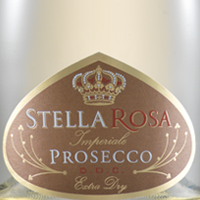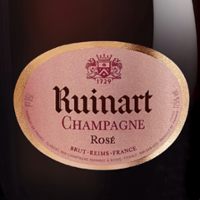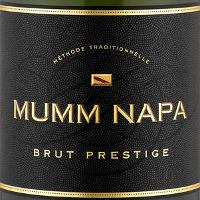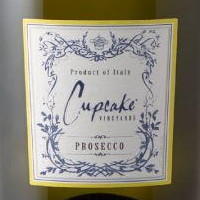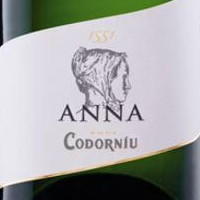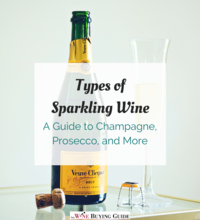Types of Sparkling Wine: A Guide to Champagne, Prosecco, and More
Learn about different types of Champagne and and other sparkling wines.

Sparkling wine is any wine that's bubbly. It can be white wine, red wine, or rosé, and it is made all over the world.
Sparkling wine is perfect for celebrating. It’s practically a necessity at weddings, the holidays, and other festive events. During these celebrations you may be having too much fun to focus on the sparkling wine, but there is actually a lot to learn about this fizzy beverage.
Champagne, Prosecco, Cava, and other sparkling wines all have different flavors and are made in different ways. They also come from different parts of the world, which can help you match sparkling wine with food. For example, did you know that Cava is a sparkling wine from Spain? It’s sublime with tapas and as an ingredient in sangria!
When you go to the store to pick up a bottle of sparkling wine, you will see a wide range of labels and price points. To get started, here's some information on what labels may mean.
This quick and simple guide to Cava wine will take the mystery out of this Spanish sparkler. With this guide you can quickly learn the basics of Cava: what it tastes like, how to serve it, and how much you should pay for it.
Types of Sparkling Wine
-
Champagne
Champagne is sparkling wine that is made in the Champagne region of France. Because Champagne is the most famous sparkling wine name, many people use it to describe any sparkling wine. However, only wine made in the Champagne region of France should really be called "Champagne."
Champagne is the most famous type of sparkling wine, and usually the price reflects that (i.e. it is often expensive). -
Cava
Cava is sparkling wine from Spain. Cava actually makes one of the best sparkling wines for mimosas! -
Prosecco
Prosecco is sparkling wine from Italy, made using the Charmat (tank) method of fermentation. We have more information on the Charmat method below! -
Metodo Classico
Metodo Classico is sparkling wine from Italy, made using the classic method of fermentation. -
Sekt
Sekt is German or Austrian sparkling wine that is fermented in the classic method. -
Espumante
Espumante is Portuguese or Argentinian sparkling wine that is fermented in the classic method. -
Crémant
Crémant is French sparkling wine that is made outside of Champagne. -
Sparkling Moscato and Other Sparkling Wines
You may have encountered sparkling Moscato or other wines that don't seem to fit into these categories. Winemakers all over the world can transform their favorite grapes into sparkling wines. You can encounter everything from sparkling Sauvignon Blanc to sparkling Shiraz!
Moscato is naturally frizzante or semi-bubbly. It's a great choice if you love sweet sparkling wine. Lambrusco is an Italian red wine that is also often made in the frizzante style. It's sometimes sweet and sometimes dry.
What’s the difference between the classic and Charmant (tank) method of fermentation?
Different types of sparkling wine are made using different methods. The method of production affects the taste of the wine, and there's some debate about which is the best.
Sparkling wine made in the classic method essentially involves doing a second fermentation inside each 750ml bottle of wine.
Yeast and sugar are added to the base wine, and then the sealed bottle has to be rotated and shaken over a period of weeks or months. Then the residual clump of yeast has to be removed and the bottle resealed. This time-intensive method is often reflected in the price point of sparkling wines produced using the classic method.
The tank or Charmant method also uses a second fermentation, but the wine is still in a large tank instead of individual bottles. This makes the agitation and bottling processes much more efficient and cost-effective.
Which of these methods is better? Sparkling wine makers tend to swear by one or the other. For most consumers, unless you are an expert in types of sparkling wine, it will be difficult to tell the difference by taste. However, if you are looking for a sparkling wine experience that most closely resembles drinking Champagne, look for wines made using the classic method.
The dryness of your sparkling wine is likely to be more noticeable to you. Here are some terms to look for on sparkling wine labels.
-
Brut or Extra Brut
Brut sparkling wine is very dry (i.e. not sweet). Expect “Extra Brut” to be dryer than “Brut," but on the whole both of these will have little sweetness and high acidity. Brut pairs well with food because of its dryness. -
Extra Dry
Surprisingly, Extra Dry sparkling wine is less dry (i.e. sweeter) than Brut. It has just a touch of sweetness, but isn’t too sweet. -
Sec
Sec is sweeter than Extra Dry. -
Demi-Sec
Demi-Sec is a sweet sparkling wine. It is often served with dessert.
If you keep all of this in mind for your next bottle of bubbly, you’ll be able to pick out the perfect sparkling wine for your next special occasion. Have fun!
Great Sparkling Wines, Champagne, and Prosecco from our Wine Catalog
Enjoy this list of sparkling wines. There are options for every budget, whether you want a cheap sparkling wine or something luxurious for a special occasion! Be sure to browse our best Proseccos under $20, too.
What are your favorite types of sparkling wine, champagne, or prosecco? Comment below with your recommendations!
Read NextRed Wine Sweetness Chart
Free wine recommendations, giveaways, exclusive partner offers, and more straight to your inbox!
nataliegrace
Aug 17, 2017
Wow, I've always wondered what makes sparkling wine bubbly, but I never thought the process was so complicated. This is great information!
Sara R
Apr 28, 2017
When I was recently 21, my roommate and I wanted to make some mixed drink that called for sparkling wine. So, I'm in the sparkling wine aisle at Binny's, completely clueless, and wondering what the difference between sparkling wine and champagne is. I called my dad and asked. He told me they were the same, except champagne came from a specific area in France. THEN, when I got home and was trying to open it, I had no idea how. So I called him again and he walked me through it and somehow it's way easier than opening a corked wine bottle. All you need is a rag and a twisting motion. But I'd seen people burst open champagne bottles and it explode everywhere, which I didn't want to happen in my house, so I opened my back door and aimed the bottle outside just in case. The cork came out easily and didn't spray anywhere. Thanks, Dad!
Report Inappropriate Comment
Are you sure you would like to report this comment? It will be flagged for our moderators to take action.
Thank you for taking the time to improve the content on our site.


